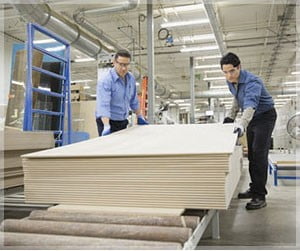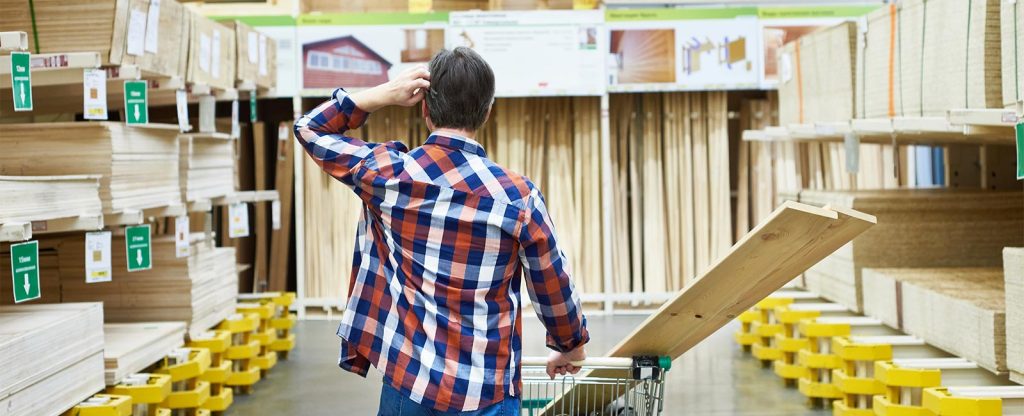Plywood is one of the most versatile materials in modern construction, used in everything from structural support to high-end interior finishes. But not all plywood is the same. Selecting the best plywood type for a particular construction can mean the difference between long-term durability and costly repairs. The key distinction lies in whether the plywood is structural or non-structural.
The fundamental difference between structural and non-structural plywood
The main factor that determines whether plywood is suitable for structural or non-structural construction is the type of glue used to bond its layers.

A-Bond glues are based on phenol formaldehyde resin, while B-Bonds tend to be a combination of melamine-urea formaldehyde. Both types of glue create a bond between the plies that’s strong enough to withstand damp conditions and temperature changes. These glues make plywood ideal for load-bearing and external applications, earning them labels like “structural,” “exterior,” or “construction-grade” plywood.
C-D Bond glues are based entirely on urea-formaldehyde resin, which tends to deteriorate quickly when subjected to high humidity and temperature fluctuations. Plywood made with such lower-grade adhesives should be limited to indoor aesthetic finishes.
Where to use structural construction-grade plywood
As the name suggests, this plywood is designed for strength and resilience, making it ideal for:
- Load-bearing applications – Wall bracing, flooring, roof sheathing, and other internal structures or formwork.
- Outdoor structures – Hoardings, crates, bins, and even outdoor furniture.
- High-moisture areas – Marine-grade plywood is specifically made with “weather- and boil-proof” (WBP) glues. It can withstand prolonged exposure to water without delaminating. It is perfect for saunas, bathrooms, and wet areas.

For long-lasting durability, A-Bond structural plywood is the best choice, offering superior resistance to extreme weather conditions. B-Bond plywood, while still suitable for outdoor use, works best in applications where it has some protection from the elements, such as exterior door skins and concrete formwork.
Where to use interior (non-structural) plywood
Interior or non-structural plywood is better suited for interior applications where aesthetics take priority over load-bearing strength. Common uses include:

- Wall and ceiling linings – Ideal for creating polished, decorative surfaces.
- Furniture and cabinetry – High-quality interior plywood provides a smooth, paintable or stainable finish.
- Design elements – Used for feature walls, shelving, and built-in fittings.
Within this category, C-Bond plywood offers a better finish and higher humidity resistance, making it ideal for internal spaces with moderate moisture exposure. It makes the best option if you plan on applying paint.
D-Bond plywood boards, on the other hand, have more visible blemishes and less tolerance to humidity. It is best for concealed areas or cost-effective decorative projects.
Choosing the best plywood for your construction project
The best plywood for construction depends on both functionality and aesthetics. While structural plywood ensures durability and strength, non-structural plywood provides flexibility in design. A well-informed choice will enhance both the longevity and visual appeal of your project.
If you lack the experience to make a well-informed choice, consult the best architects and engineers about your project materials. This will save you from making costly mistakes. Whether you’re developing a modern commercial building, luxurious home interiors, or public property, understanding the advantages and limitations of structural versus non-structural plywood will bring you one step closer to realising the project you’ve been envisioning.
If you’re sourcing plywood in Australia, it’s best to partner with a trusted wholesale supplier to ensure you get high-quality materials suited to local conditions. If you’re still deciding what type of plywood to use, give us a call. We’ll walk you through all possible options and give you the expert advice you need.



